One of the things we cherish most about Western Montana is our wildlife—the wild animals we share our home with and have nothing but awe and respect for. Our diverse region is one of the most intact ecosystems in the lower 48 states, and it’s likely you’ll spot wildlife while you’re here. While we’d like to introduce you to these incredible animals, it’s also important to remember that wildlife is just that—wild. If you encounter an animal, please behave respectfully and responsibly.
American Bison
Bison are the iconic image of the West. These huge, shaggy herbivores have curved horns that grow up to 2 feet long. Bison are the heaviest land animal in North America, weighing between 1,000 and 2,000 pounds. Don’t let their size fool you, however, as they can run up to 40 mph. Though “bison” is the accurate term for these wild animals, you may hear American Indians refer to them as “buffalo.” In Moiese, visit the Bison Range to learn more.
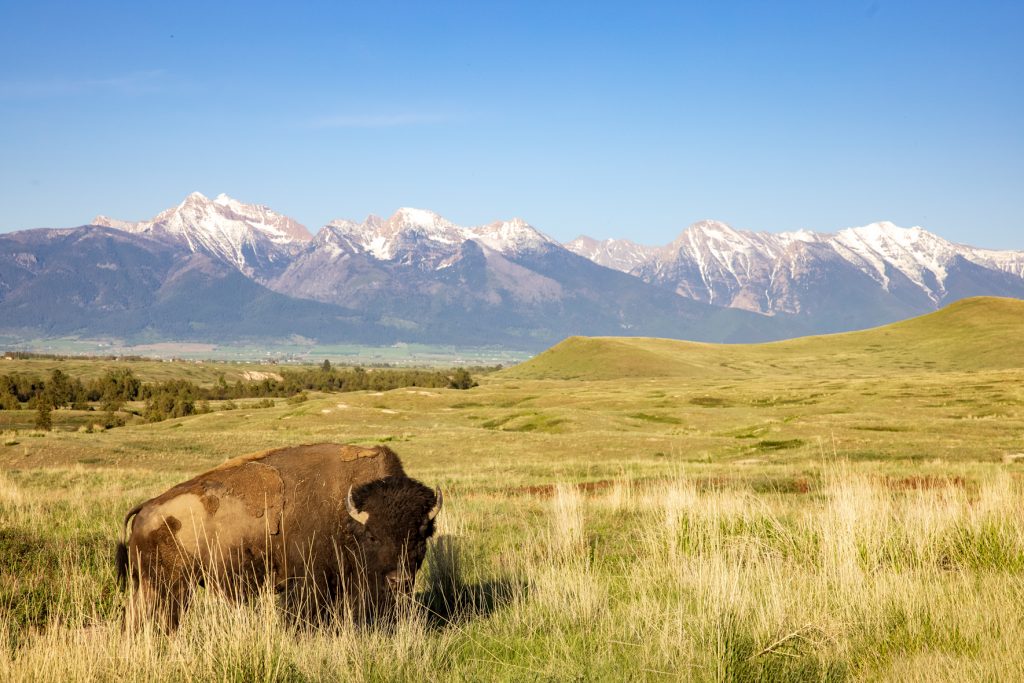
Bears
Western Montana is home to concentrated populations of both grizzly and black bears. Despite their name, black bears can range from black to brown and blond to cinnamon in color. They have a straight snout, and their highest profile point is at their rump, instead of the shoulders (like a grizzly). These bears generally weigh between 200 and 600 pounds, measuring 5 to 6 feet long. Black bears are opportunistic eaters; they live on a diet of fruits, nuts, berries, insects, mammals and birds. They will also be attracted to any food you leave around your campsite, so be sure to read up on bear safety. Generally, black bears favor solitude, and when they’re not hibernating, you’ll find them roaming the mountains, or lazing in a tree…though it’s best to not seek them out.
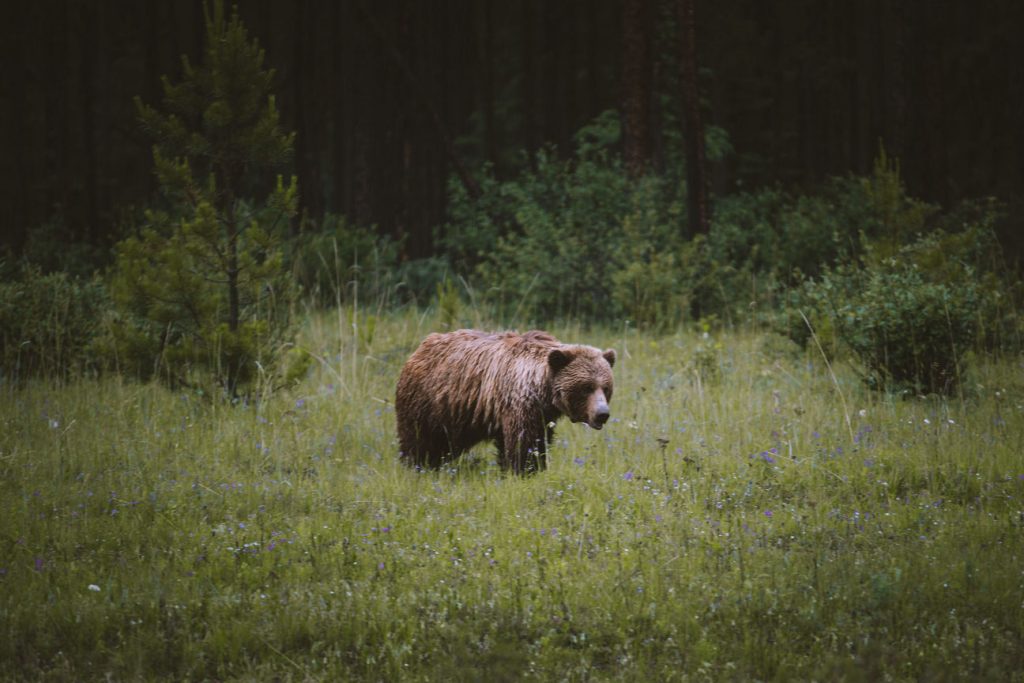
Glacier Country is also home to the grizzly bear, characterized by a distinctive hump on its shoulders, an upturned snout, and powerful forearms for digging. Typically, a grizzly’s coat is dark brown, but it can vary from very light cream to black. Grizzly bears can reach weights between 400 and 1,500 pounds and may even stand up to 8 feet tall. Despite their massive size, grizzlies can run at speeds of up to 35 miles per hour. Grizzly bears are also solitary creatures, with the exception of sows (female bears) and their young, who can stay with their mother until they are up to 3 years old. Sows are very protective of their young, and it is extremely dangerous to get between a mother and her cubs. Although these bears are top-of-the-food- chain predators, they usually live on a diet of berries, insects, and grass until they secure mammal meal.
Bighorn Sheep
This aptly named mammal has a grayish-brown coat and a distinct white rump patch around its small brown tail. They are one of only two species of wild sheep found in North America, and in Western Montana you’ll find them in steep mountainous habitat. Males (rams) can weigh up to 400 pounds and have larger horns (up to 45 inches) than females (ewes). A male’s distinctive curled horns can weigh up to 30 pounds and measure a foot in circumference at the base. Bighorn sheep live in large herds, mainly with their same sex until mating season. Rams will establish dominance by running at each other and clashing horns, until one gives up.
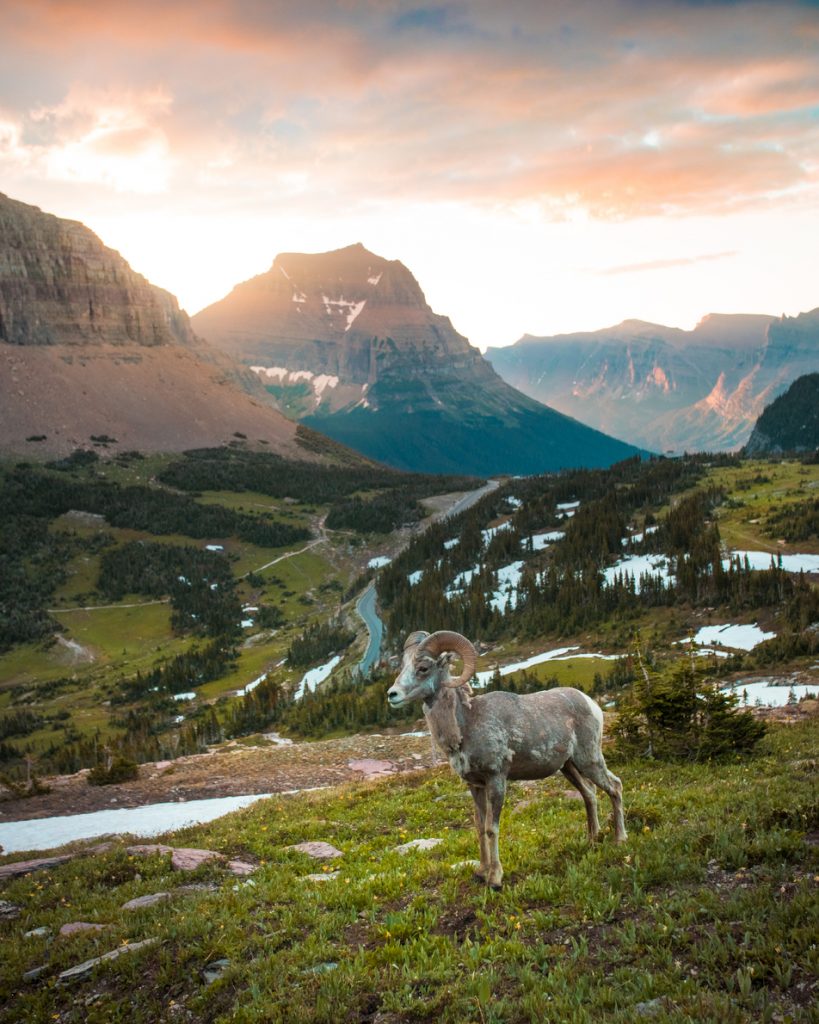
Deer
Montana is home to mule deer and white-tailed deer. Mule deer are distinguished by their big “mule-like” ears, (hence the name), which are nearly as large as their heads. Their coats are gray during winter and brown in the summer. They have short, round tails with a black tip. A distinction between deer species is how their antlers are formed. Mule deer antlers fork and then fork again. Mule deer are more migratory than their white-tailed relatives.
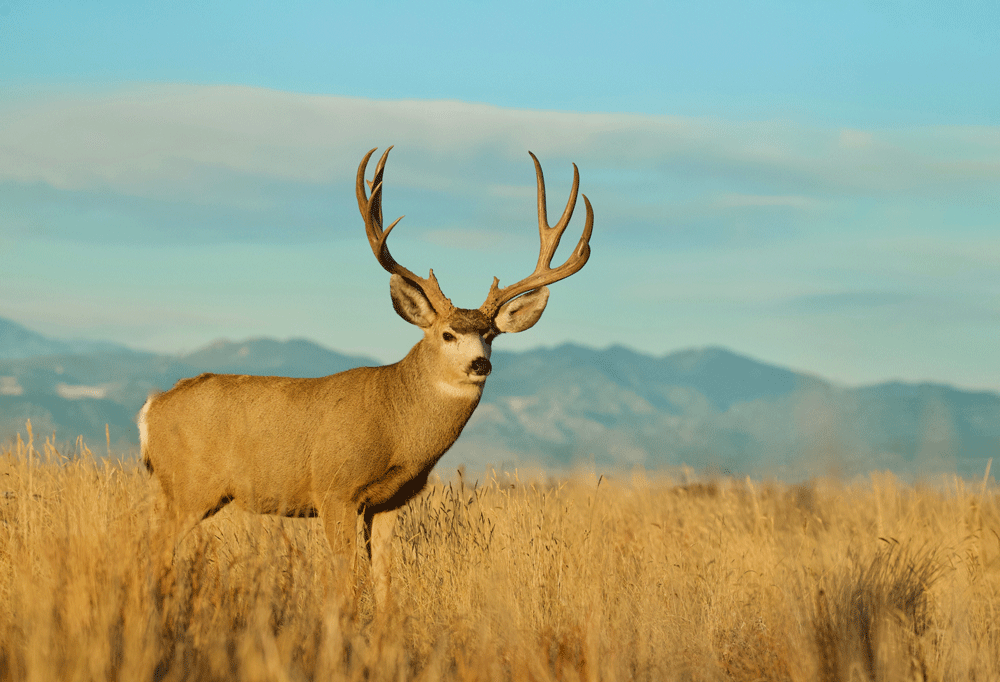
White-tailed deer are noted for their large, white bottom and tail, which can be seen as they run away. Their coats are grayish brown in winter and reddish-brown during summer. Their antlers grow a main beam, with single points coming off that beam. White-tailed deer have a small home range; you’ll find them along creeks and rivers, and occasionally in town. Deer in general are preyed upon by Montana’s predators. They use their speed and agility to outmaneuver them, leaping as high as 10 feet in a single bound and sprinting up to 30 mph.
Elk
Western Montana is home to Rocky Mountain elk. Elk feed on grasses, forbs, shrubs, tree bark and twigs. A full-grown elk can weigh between 500 and 700 pounds, and a set of antlers on a mature bull can weigh up to 40 pounds. Female (cow) elk do not have antlers. Elk are one of the noisiest ungulates. If you’re lucky enough to hear an elk bugle in the wild, it is a magical sound you won’t soon forget. Elk breed in the fall, and during a time called “the rut” males will gather female elk and their calves into groups called harems, which the bulls fiercely guard. Visit the Rocky Mountain Elk Foundation in Missoula to learn more.
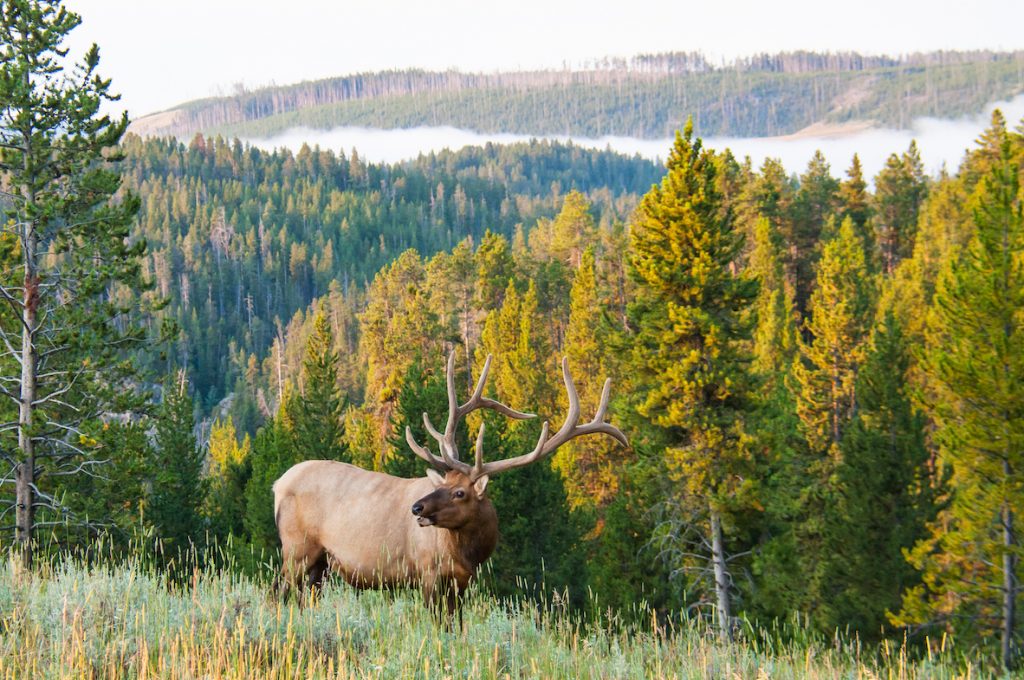
Gray Wolves
Western Montana is home to many packs of gray wolves, which are an important part of the ecosystem (though it’s not likely you’ll spot one). Gray wolves have a coat of gray or brown and long bushy, black-tipped tails. Generally, they can be between 4 and 6 feet long (including tail) and weigh 60 to 145 pounds. Wolves are known for their stamina, and a pack’s territory usually covers 200 square miles. They often run at a pace of about 5 miles per hour, but they can reach speeds of around 40 miles per hour. Wolves are carnivores, and adults can eat 20 pounds of meat in a single meal.
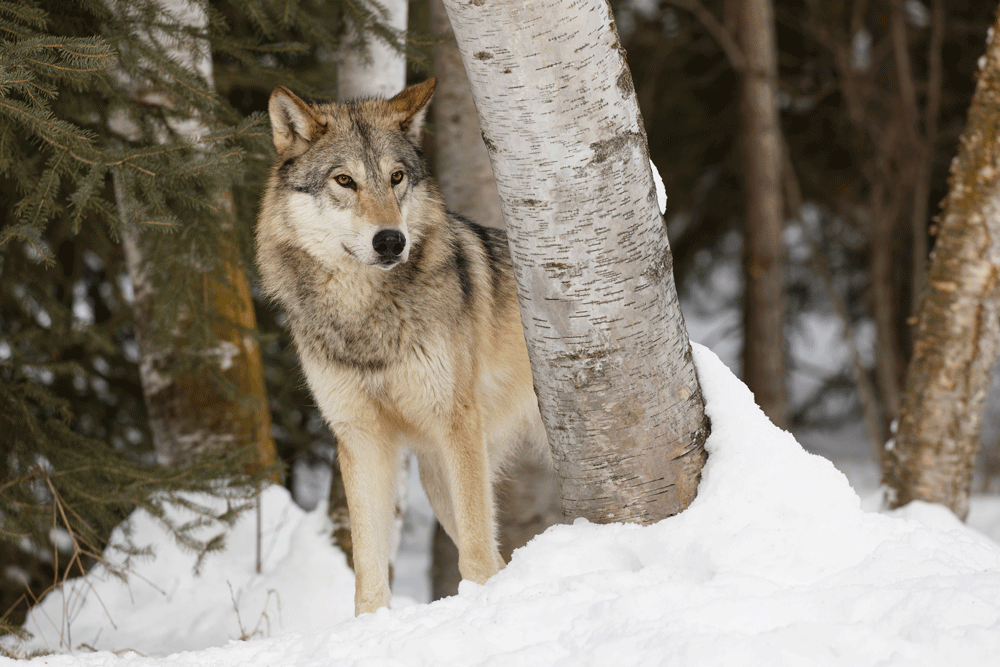
Moose
The largest antlered animal in the world standing at 6 feet tall, a male moose can weigh between 1,200 and 1,600 pounds and have antlers, while females may reach weights of 800 to 1,300 pounds. Male moose antlers can span up to 6 feet wide. Moose generally live in forested areas, spending their time in meadows and marshy areas during the summer months. Moose are also noted for their incredible swimming ability; they can hold their breath underwater for 30 seconds. Their diet is typically made of underwater vegetation, as well as leaves, twigs, tree buds and tree bark. If you encounter a moose, use caution as male bulls may be aggressive and female cows are incredibly protective of their young.
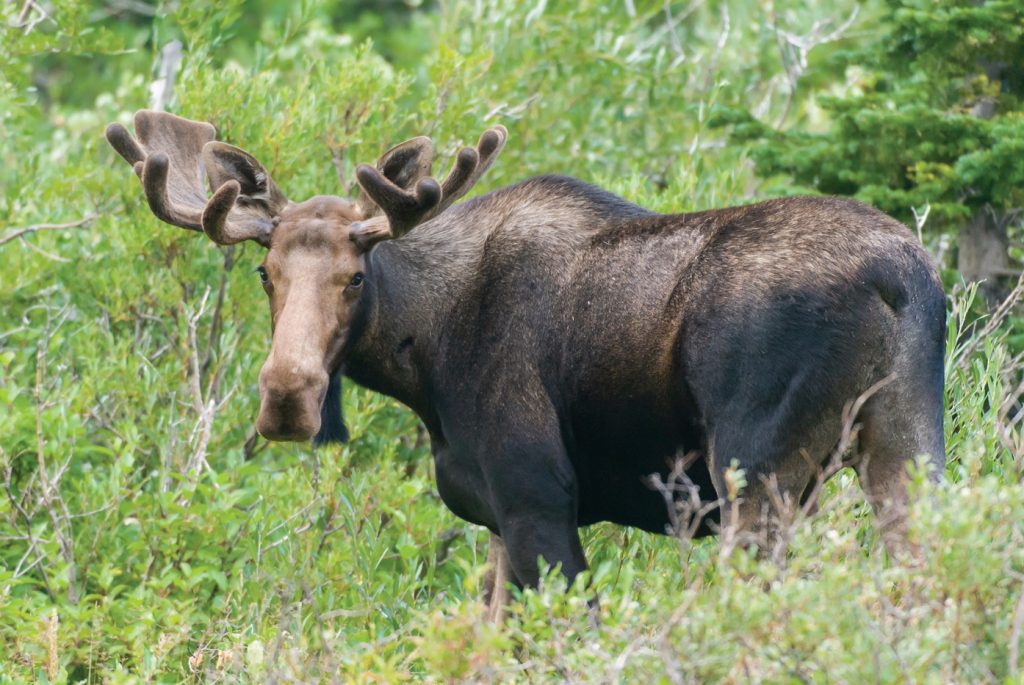
Mountain Goats
Chances are, if you’re traveling through Glacier National Park, you’ll likely see a mountain goat. Not only are they often at Logan Pass, but you can also see them scaling high, sheer cliffs or encounter them on park trails. Known as a surefooted animal, mountain goats have incredible climbing abilities and at one day old are expected to climb with their mother. Powerful and nimble, they can jump approximately 12 feet in one single movement. Both males and females have horns, although the males’ horns are larger. Their incredible white coats and beards protect them from Montana’s cold temperatures and swift mountain winds.
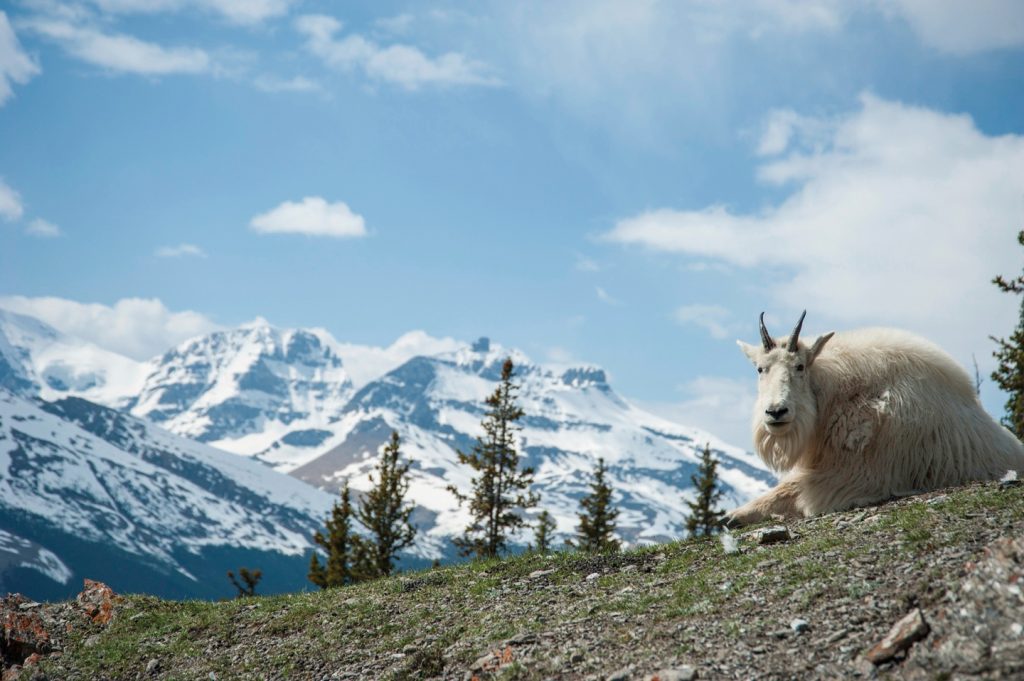
Mountain Lions
An elegant cat, mountain lions have a long, sandy-colored body, powerful limbs, a small head, short rounded ears and a long tail. They also go by many names, including cougar, panther, red tiger and puma. Mountain lions typically hunt at night and move stealthily as they travel. Their diet usually consists of deer, elk and hare, but may consist of a variety of other animals and mammals. They are incredibly fast animals that can reach speeds of 50 mph in a sprint, though they typically travel at 10 mph. They can leap 15 feet and cover 40 feet in one bound.
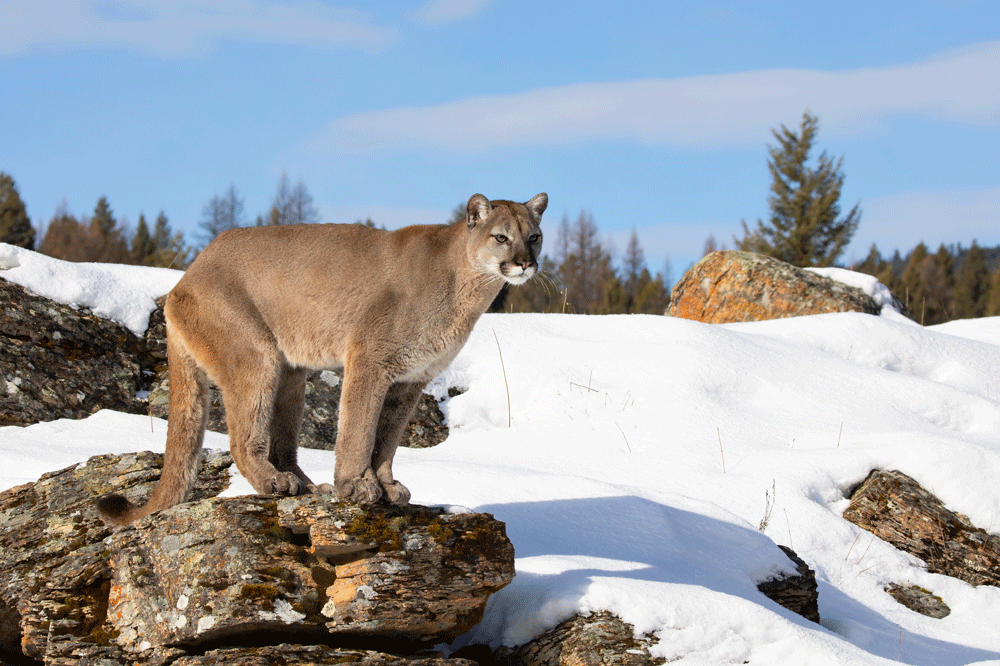
Wildlife Safety
- View wildlife from the safety of your car or from a safe distance. Stay at least 100 yards away from bears and at least 25 yards away from all other wildlife such as mountain goats and bison.
- Never approach, touch or feed wildlife, even when an animal does not seem to be threatened by your presence.
- Let wildlife know you’re nearby. When hiking, be sure to bring a friend, carry bear spray, stay on designated trails and make noise at regular intervals.
Please note: We ask that all our visitors and residents Recreate Responsibly by being mindful of the following: practice physical distancing; know before you go; plan ahead; play it safe; leave no trace; tread lightly; and help build an inclusive outdoors.
October 17, 2022
Related: About, Montana, Outdoor Fun, Recreate Responsibly, Vacation, Wildlife


Comments